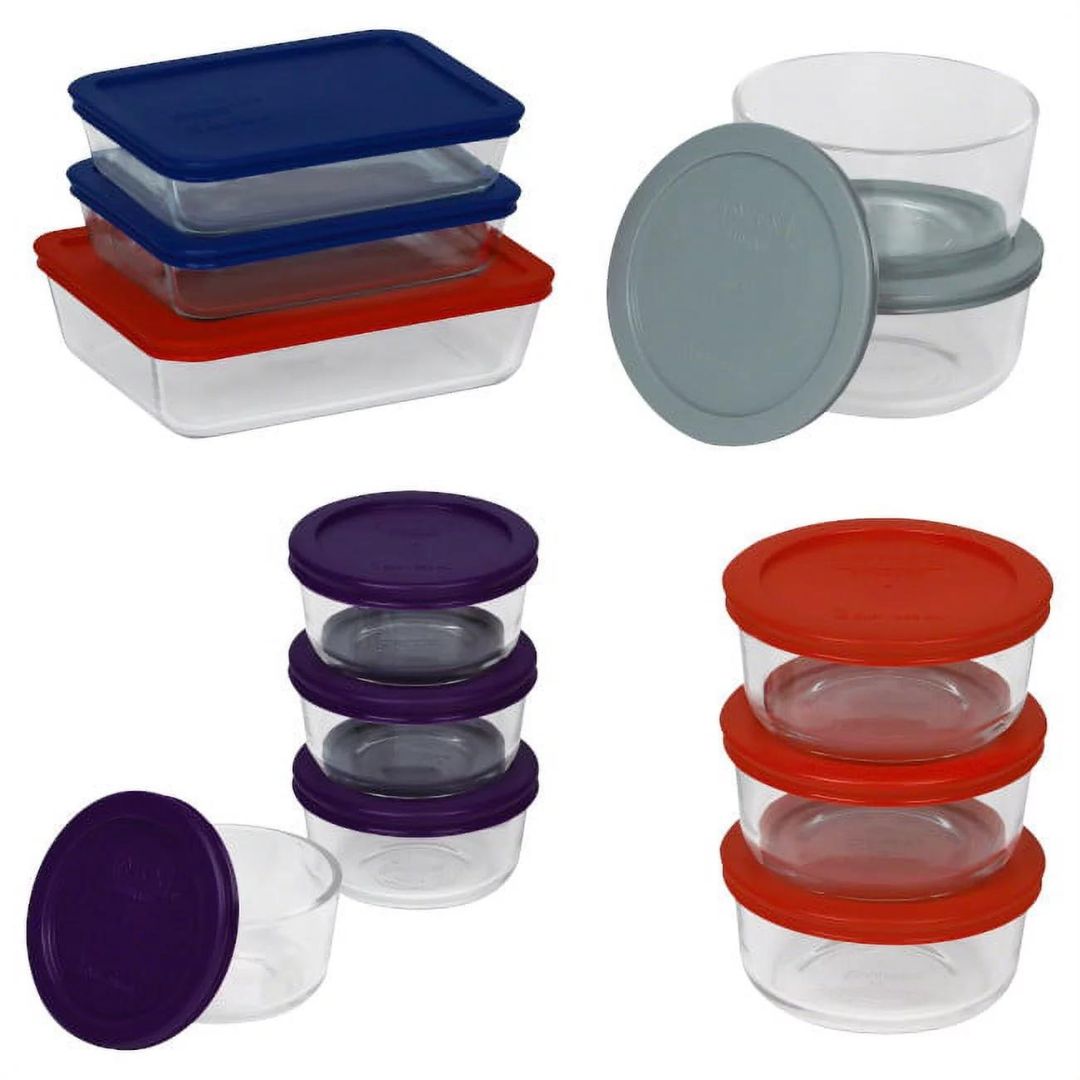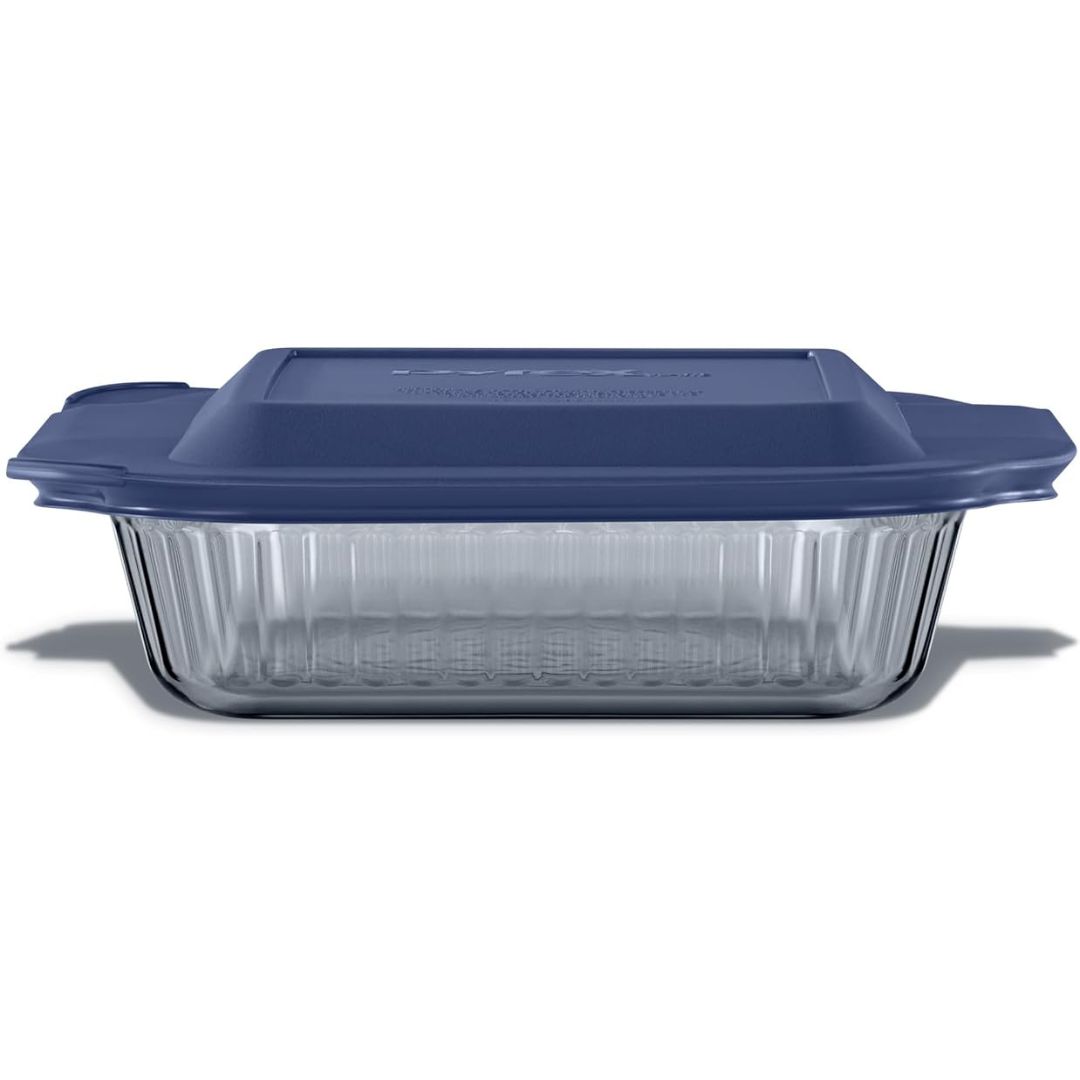Can Pyrex go in the oven? Chefs warn you should always follow these important rules
Professional chefs explain whether or not you can put Pyrex in the oven
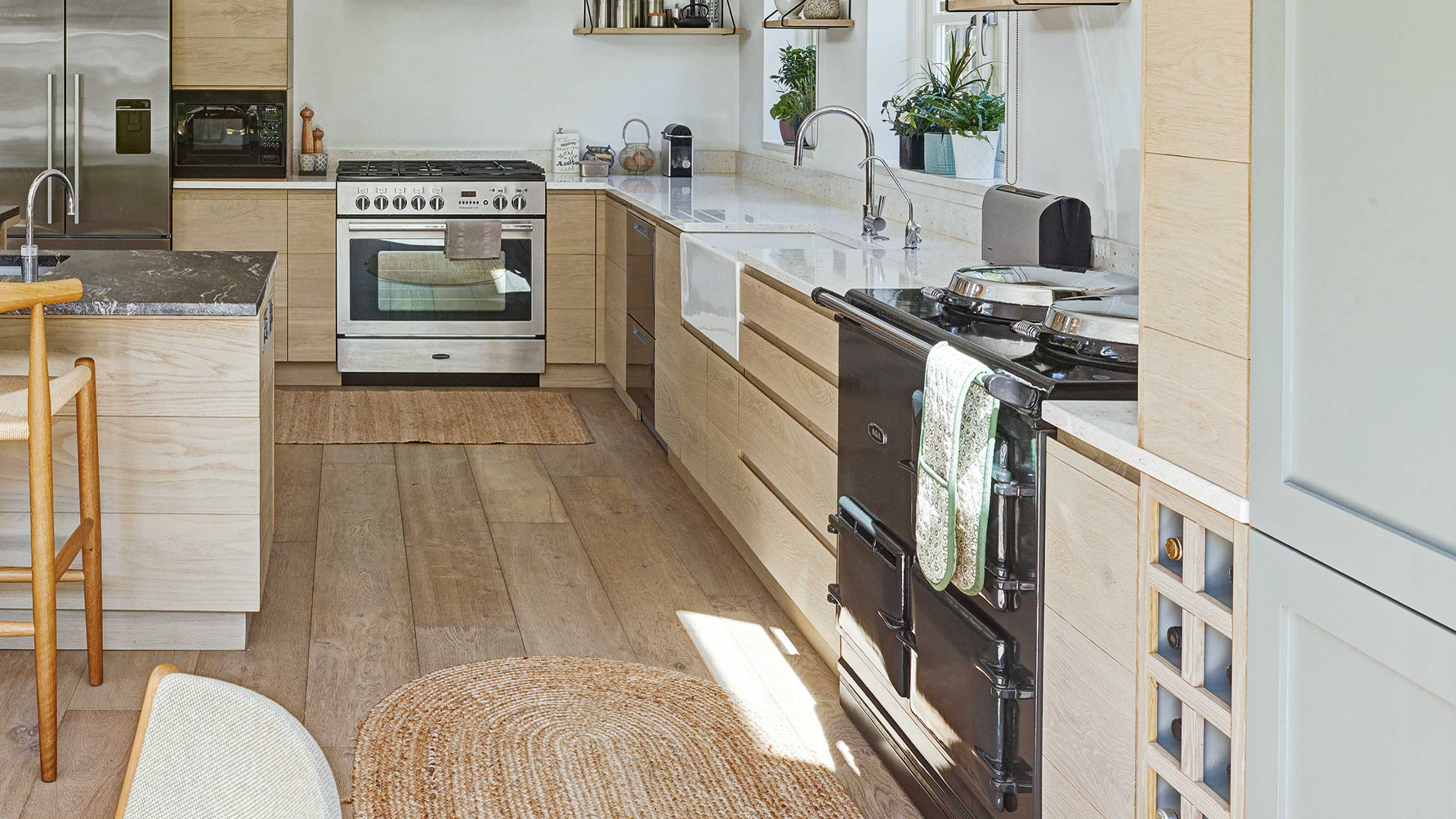

Pyrex is commonplace in most kitchens nowadays – perfect for storing leftovers and freshly made baked goods. But can Pyrex go in the oven?
Long story short, Pyrex can go in the oven. However, much like putting silicone in the oven, there are some important rules to follow if you want to avoid cracking or shattering these products.
Below, professional chefs share the caveats of putting Pyrex in the oven and what you need to know to avoid some fatal mistakes.
Can Pyrex go in the oven
Pyrex is useful to have in your kitchen no matter your level of skill. They can help master your meal prep and are even deemed an essential thing every chef’s kitchen should have, says Pesha Perlsweig, private chef, cooking instructor and Founder of Muthalicious:
‘I exclusively use Pyrex for my clients and in my own home. I pack food in them specifically because they can go into the oven,’ she begins. Treated correctly, these simple glass dishes could last you for years, if not longer.
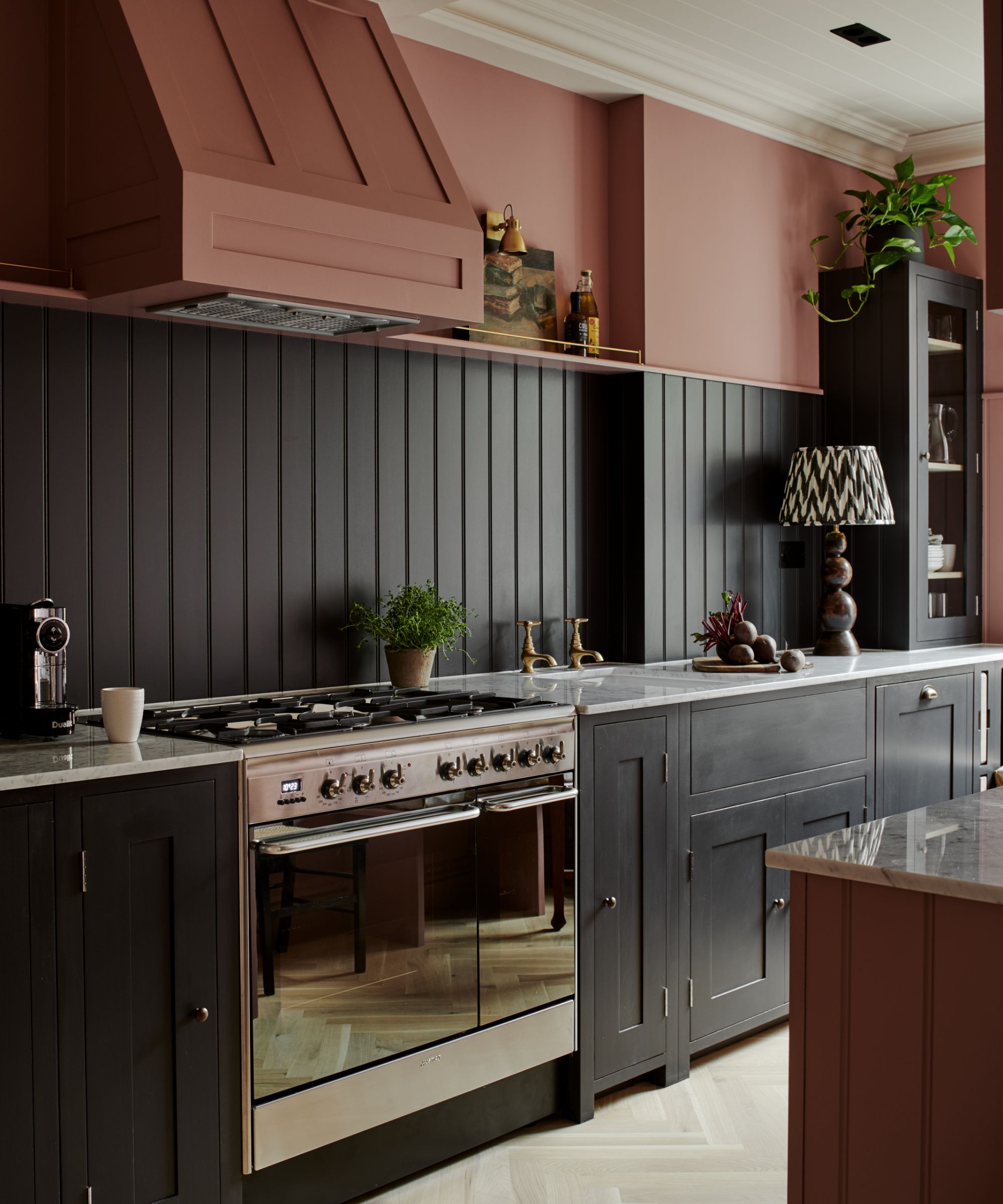
That being said, not all glass kitchenware is official Pyrex, meaning one unassuming dish might not be suitable for high temperatures, warns Thomas Ricci, VP of culinary operations at Intelligent Foods. As such, it is really important you check these pantry staples before putting them in the oven, he urges:
‘It depends on the item in question – many Pyrex glassware containers are tempered and suitable for the oven, but regardless of the brand, always check the manufacturer's website for safety details item by item.
‘More often than not, the bottom of glass containers are often etched with safety messages indicating how the container may be used. Also, note that some container parts (lids for example) are typically not oven-safe.’
How to use Pyrex in the oven

If you have established that your Pyrex is oven-safe, you can generally assume it is good for use for any dish or baking. While you can just pop it in the oven as you would any other dish or tray, some simple care tips can help to extend the life of your cookware.
Private chef, Pesha Perlsweig, suggests not using the dishes in any temperatures higher than 400°F. Most Pyrex is certified safe up to 425°F, but maintaining a slightly lower temperature reduces wear, mitigates the chance of shattering, and will ensure your dishes last for decades.
'What’s more, when reheating leftovers, it is important to leave the glass to warm up before putting it right into the oven,' she adds. 'Putting a super cold dish into a preheated oven is a great way for them to shatter. So, unless you want to clean an oven filled with glass and leftovers, it is best to leave it on the side for at least 10 minutes before cooking. Putting it on a sheet pan instead of directly on the oven rack can help with this too.'
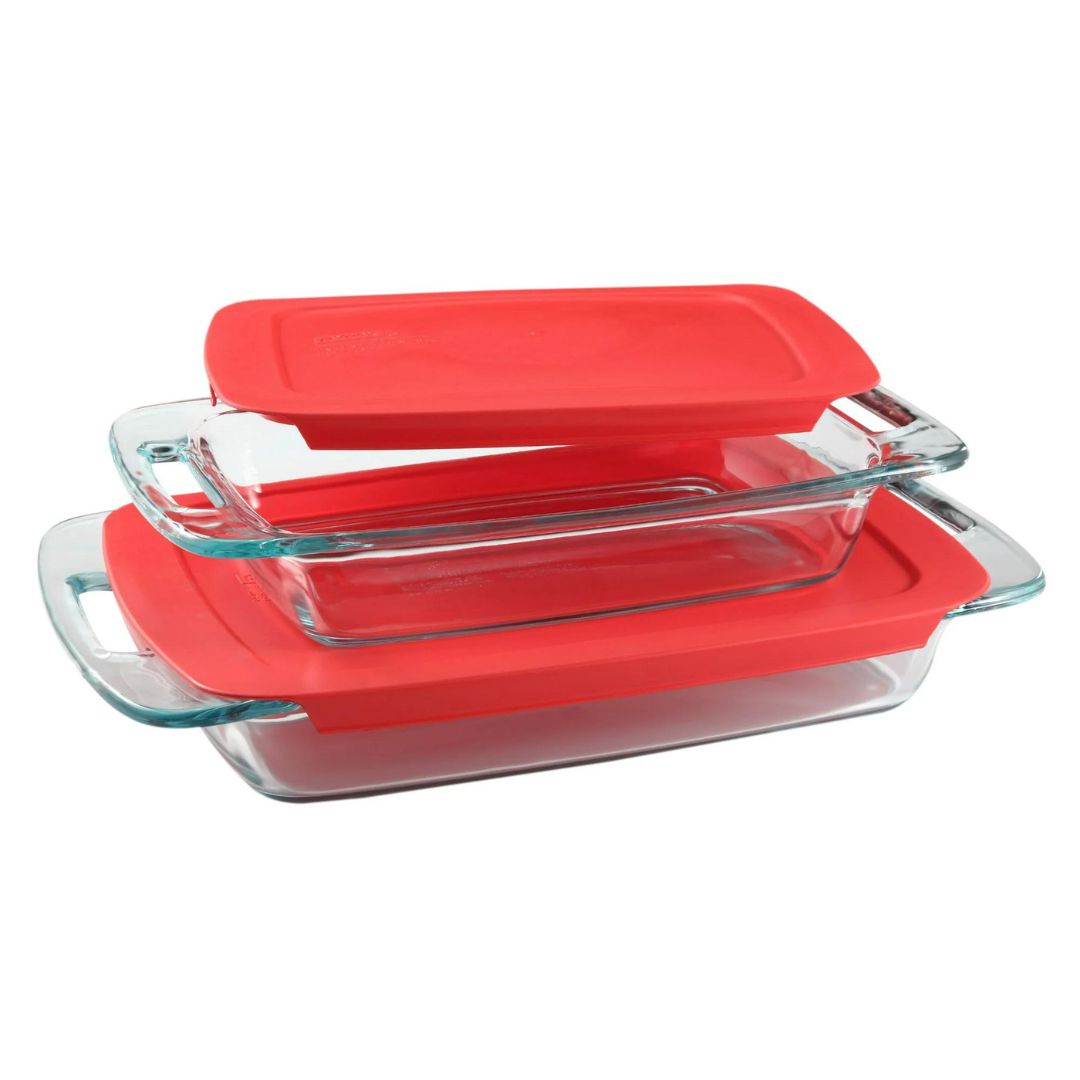
These dishes are oven, microwave, and dishwasher safe, and the lids are safe for use in in the freezer, dishwasher, and microwave too.
FAQs
How do I tell if a dish is real Pyrex?
There are two different types of Pyrex glass cookware. Both are real, but one is more durable than the other. One type uses soda-lime glass which is less durable and less heat-resistant than the other, which uses borosilicate glass. You can often tell the difference based on the Pyrex logo. An all-uppercase ‘PYREX’ logo suggests it is the much sturdier borosilicate glass, while all-lowercase hints it is the newer soda-lime glass that should be kept away from ovens and microwaves to avoid damage.
Can Pyrex go in the microwave?
Pyrex is generally safe for use in a microwave, especially if it is made out of borosilicate glass, which is made to withstand high temperatures. If you are unsure if your specific glass dish can go in the microwave, check for the labeling on the base of the dish or look it up on the manufacturer's website to avoid it cracking or shattering.
Overall, Pyrex is an incredibly durable eco-friendly food container that lets you easily see its content (making it perfect for organizing a fridge), doesn't risk leaching toxins from plastic into your food, and can safely be moved from fridge to oven with little risk. Some Pyrex is even freezer-safe, making it the perfect kitchen storage to keep on hand.
Sign up to the Homes & Gardens newsletter
Design expertise in your inbox – from inspiring decorating ideas and beautiful celebrity homes to practical gardening advice and shopping round-ups.

Chiana has been at Homes & Gardens for two years and is our resident 'queen' of non-toxic living. She spends most of her time producing content for the Solved section of the website, helping readers get the most out of their homes through clever decluttering, cleaning, and tidying tips. She was named one of Fixr's top home improvement journalists in 2024.
-
 Ina Garten's storage pantry is an insightful window into all of the best cookware used by the chef – and it's easy to recreate on your kitchen shelves from $48
Ina Garten's storage pantry is an insightful window into all of the best cookware used by the chef – and it's easy to recreate on your kitchen shelves from $48The beautiful dishware in The Barefoot Contessa's Hamptons pantry showcases the tools she uses most often to cook – this is exactly how you replicate it
By Sophie Edwards Published
-
 Extend the lifespan of your appliance with 5 simple but crucial washing machine maintenance tips
Extend the lifespan of your appliance with 5 simple but crucial washing machine maintenance tipsFrom cleaning the filters to keeping the door open, experts reveal the washer tips they swear by
By Andy van Terheyden Published
